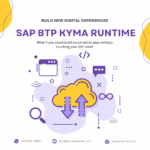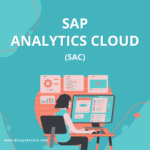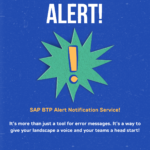Migrating to SAP S/4HANA is not just a technical upgrade—it’s a strategic move towards a future-proof enterprise. It’s about embracing innovation, real-time data analytics, and streamlined processes. Yet, despite its immense potential, migration can be daunting. The road is filled with challenges, from data volume issues to system downtimes.
At Docsys Kalmin Solutions, we understand that a successful migration isn’t just about moving data—it’s about creating a seamless transition that minimizes disruption while maximizing efficiency. In this blog, we’ll guide you through the most crucial aspects of SAP S/4HANA migration, from planning to execution and optimization.
Why SAP S/4HANA Migration Matters
Businesses today are under pressure to evolve rapidly, and legacy systems can hold you back. SAP S/4HANA isn’t just another ERP upgrade; it’s an intelligent suite designed for the digital age. Here’s why migrating to S/4HANA makes sense:
- Real-Time Analytics: Leverage real-time data to make informed decisions faster.
- Simplified Architecture: Reduce IT complexity with an in-memory database.
- Performance Optimization: Experience faster processing and reporting.
- Integration Flexibility: Connect seamlessly with other SAP and non-SAP applications.
- Future-Ready Infrastructure: Lay the groundwork for AI, machine learning, and IoT.
However, while the benefits are clear, the journey to S/4HANA can be complex. Let’s break down how to make it successful.
Understanding the Key Challenges
1. Data Volume and Integrity
One of the biggest obstacles in migration is handling massive volumes of data. Inaccurate or redundant data can lead to prolonged downtimes and errors post-migration.
Solution: Conduct a thorough data audit to eliminate obsolete information and maintain data integrity. Clean, consolidate, and structure data before the migration process begins.
2. Custom Code Adjustments
Existing customizations from SAP ECC may not be compatible with S/4HANA, leading to functionality issues.
Solution: Conduct a Custom Code Impact Analysis to identify incompatible code and rework it as needed. Tools like the SAP Readiness Check can help assess custom code usage.
3. Minimizing Downtime
System downtime during migration can disrupt business continuity, leading to revenue loss and operational challenges.
Solution: Implement a Near Zero Downtime (NZDT) approach, utilizing backup systems and parallel processing to maintain availability.
4. Skill Gaps and Training Needs
Migration isn’t just a technical upgrade—it’s a transformation of how teams work. A lack of familiarity with S/4HANA can hinder adoption and efficiency.
Solution: Develop a robust training program tailored to different user roles. Ensure your IT and business teams understand both the new functionalities and how they impact daily operations.
Step-by-Step Guide to SAP S/4HANA Migration
Step 1: Preparation and Assessment
The first step to any successful migration is a detailed assessment of your current system. This phase includes:
- Landscape Analysis: Map out your current SAP environment and dependencies.
- Data Audit: Identify critical data, redundant information, and legacy issues.
- Custom Code Analysis: Review modifications to gauge compatibility with S/4HANA.
- Skill Assessment: Identify gaps and plan training sessions.
Step 2: Defining the Migration Strategy
Choose between different migration approaches:
- New Implementation (Greenfield): Start from scratch with a new system.
- System Conversion (Brownfield): Upgrade an existing ECC system to S/4HANA.
- Selective Data Transition: Migrate only relevant data and processes.
A hybrid strategy may also be beneficial, depending on your business needs and existing landscape.
Step 3: Data Management and Cleansing
Data management is critical to reducing migration risks. Follow these best practices:
- Data Validation: Identify critical data that must be transferred.
- Data Cleansing: Eliminate outdated and redundant information.
- Data Transformation: Adjust data formats to meet the requirements of S/4HANA.
Step 4: Migration and Testing
This phase is the heart of the migration journey:
- System Setup: Prepare your S/4HANA environment with the necessary infrastructure.
- Data Migration: Transfer data securely using SAP migration tools.
- Integration Validation: Test connections with other applications.
- Functional Testing: Ensure the system meets business requirements.
- Performance Testing: Monitor speed, responsiveness, and reliability.
Step 5: Training and Change Management
A successful migration doesn’t end with data transfer—it includes ensuring that your team can effectively use the new system.
- Role-Based Training: Tailor training programs to different user groups.
- Hands-On Workshops: Offer practical, scenario-based sessions to build confidence.
- Change Management Strategy: Communicate the benefits of S/4HANA adoption to minimize resistance.
Step 6: Go-Live and Post-Migration Support
Once migration is complete, continue monitoring system performance and user engagement.
- Post-Migration Testing: Validate data accuracy and system performance.
- User Support: Provide ongoing assistance to address issues and optimize usage.
- Performance Monitoring: Track system stability and make necessary adjustments.
The Human Element: Embracing Change
Remember, technology is only as powerful as the people using it. The key to a successful migration isn’t just technical expertise—it’s leadership and vision. Inspire your teams to see the value of change. Communicate openly about the benefits and challenges. Empower them to be part of the journey.
Why Partner with Docsys Kalmin Solutions?
We don’t just migrate your data—we help your business evolve. With our tailored SAP S/4HANA migration strategies, we ensure minimal disruption and maximum impact. Our team of experts is dedicated to guiding you through every step, from planning to post-migration support.
When you’re ready to take the next step towards an intelligent enterprise, we’re here to make it seamless and effective.
Let’s build the future together. Reach out today!











